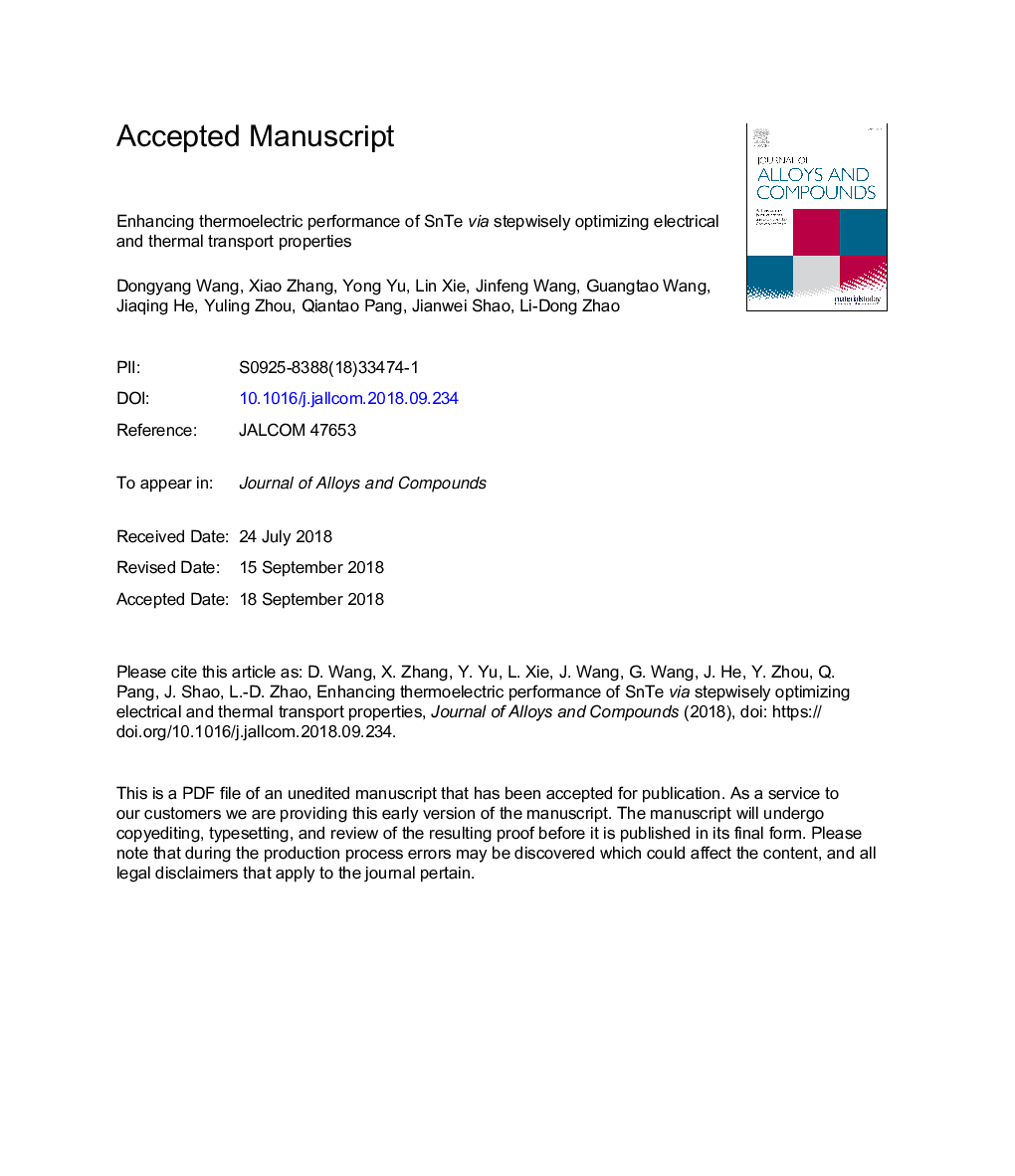| Article ID | Journal | Published Year | Pages | File Type |
|---|---|---|---|---|
| 11020019 | Journal of Alloys and Compounds | 2019 | 44 Pages |
Abstract
In this work, we report that the high performance of SnTe could be realized by enhancing electrical transport properties (power factor) and reducing thermal conductivity through stepwisely introducing elements of Sb, In and Se. We found that Sb and In co-doping can enhance Seebeck coefficients in the broad temperature range via optimizing carrier density and introducing resonant state, respectively. Moreover, nanostructures could be formed when the Sb content beyond the solubility limit in SnTe matrix, which coupled with point defects from In and Se alloying result in a very low (lattice) thermal conductivity through the enhanced phonon scattering from defects and grain boundaries. A peak ZT â¼1.0â¯at 923â¯K can be achieved with the enhanced power factor and reduced thermal conductivity. Accordingly, the average ZT value increases from â¼0.20 for undoped SnTe to â¼ 0.60 for multiple-doped SnTe (Sn0.823Sb0.17In0.007Te0.98Se0.02) over 300-923â¯K, generating a high calculated conversion efficiencyâ¯â¼â¯11%. Present results indicate the high performance of SnTe can be obtained through stepwisely optimizing strategy in both electrical and thermal transport properties.
Related Topics
Physical Sciences and Engineering
Materials Science
Metals and Alloys
Authors
Dongyang Wang, Xiao Zhang, Yong Yu, Lin Xie, Jinfeng Wang, Guangtao Wang, Jiaqing He, Yuling Zhou, Qiantao Pang, Jianwei Shao, Li-Dong Zhao,
